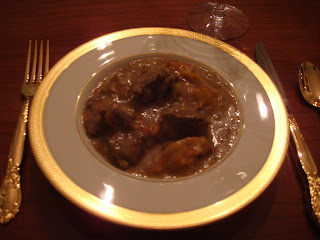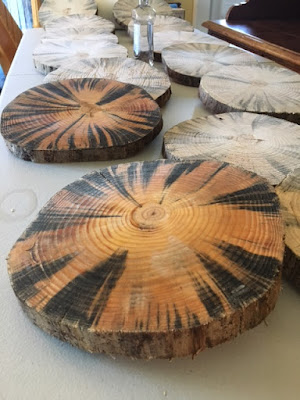Cooking Techniques - Searing Meat in Batches
 |
| Beef Curry with Tri-Colored Peppers From Exceptional Comfort The Recipes Volume I |
I was inspired last Saturday at my Le Creuset food demonstration in Leesburg, Va by one of my new Exceptional Comfort customers to write this post. A young couple was about to embark into the wonderful world of Dutch ovens, and I explained how important it was to sear meat for stew in batches.
This is what happens if you do not fry in batches, but instead, stuff as many pieces of meat in as you can fit:
You experience a wave of satisfaction when the meat hits the pan, and you hear the sound of sizzling searing thinking, "I just saved myself a bunch of time". However, a few moments later, all of a sudden you are no longer browning for some reason. Water is coming out of the meat instead of staying in! The meat is taking on an unattractive grayish hue, and worst of all - "where are all my yummy brown bits of goodness?" Sorry, no brown bits now. The finished product takes on a livery taste and texture. Edible, to be sure, but definitely a disappointment.
This is what happens when you sear in batches and don't crowd the pot:
They turn a beautiful brown with lovely golden-brown bits of goodness forming on the bottom of the pot. Brown bits, are technically called fond. Brown bits of goodness is the term used in my kitchen. The meat is taken out of the pot, and liquid, broth, or wine, (warm if using enameled cast iron) is poured onto the bits. Simmer gently and loosen the bits off the bottom of the pot with a wooden spoon or flat edged wooden utensil. These bits dissolve and form a delicous sauce to braise in. Add the meat, vegetables, spices, etc. back to the pot. Cover and braise away.
When too much meat is added, it reduces the temperature of the bottom of the pot and you are no longer frying, you end up steaming and simmering the food. How do you tell how much meat to add to avoid over crowding? It becomes a little dance between you and the meat. It also depends on the size of the pot. Add pieces of meat making sure there is and inch or so of space around each one (as an estimate). If you see water escaping and you think you may not be frying, remove some right away, and put them in the next batch. Do not try to fix the problem by turning up the heat super high. It will only burn your brown bits. Even adding a little more oil won't help if the heat is too high. If using enamelled cast iron, you should not use above a medium heat setting for searing meat.
So take the extra few minutes to get the desired result. The cost of ingredients and your time is too important to settle for less!
Ever wonder why THEY say to do things a certain way and never knew why? Ask me what you always wondered about!


Comments
Post a Comment